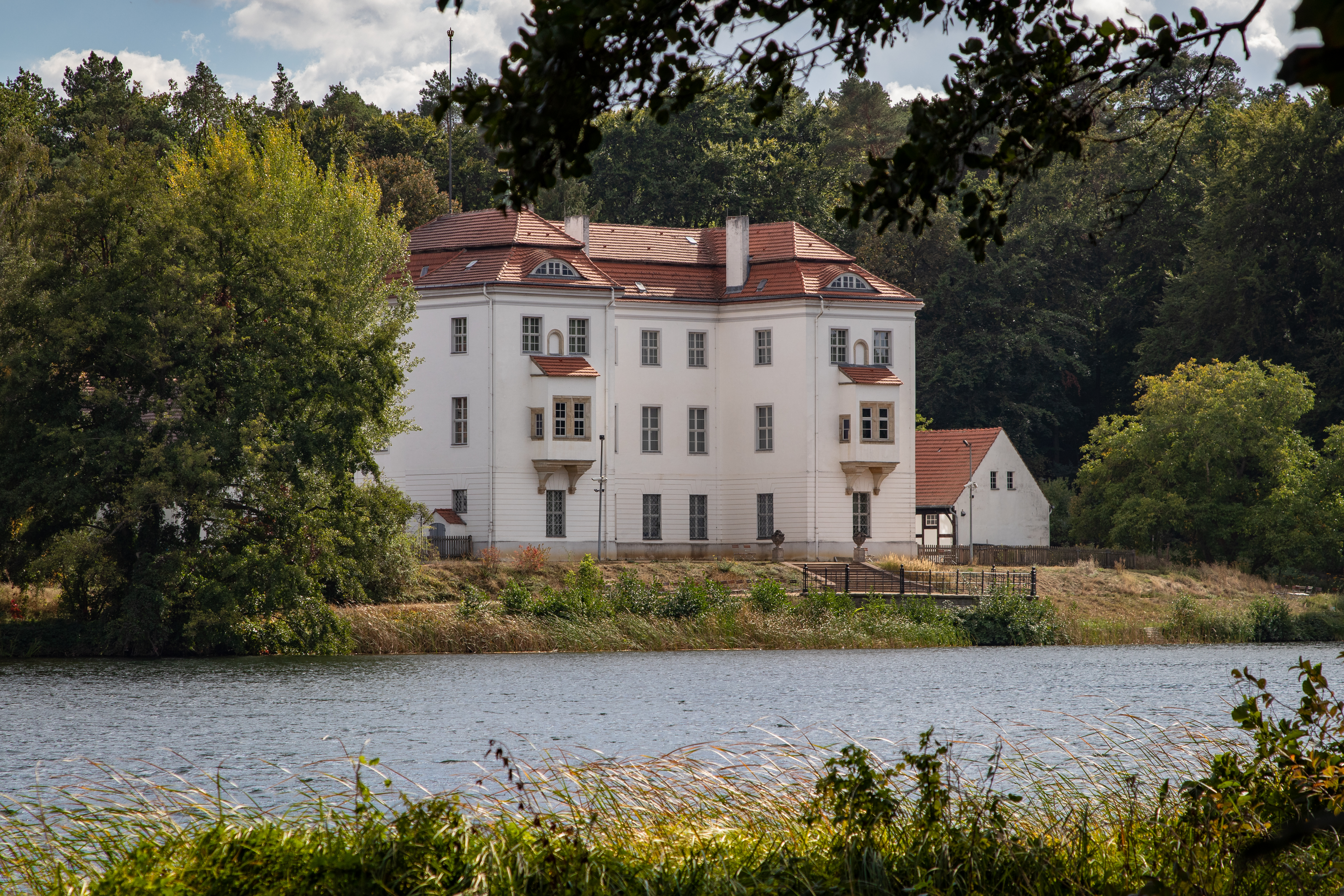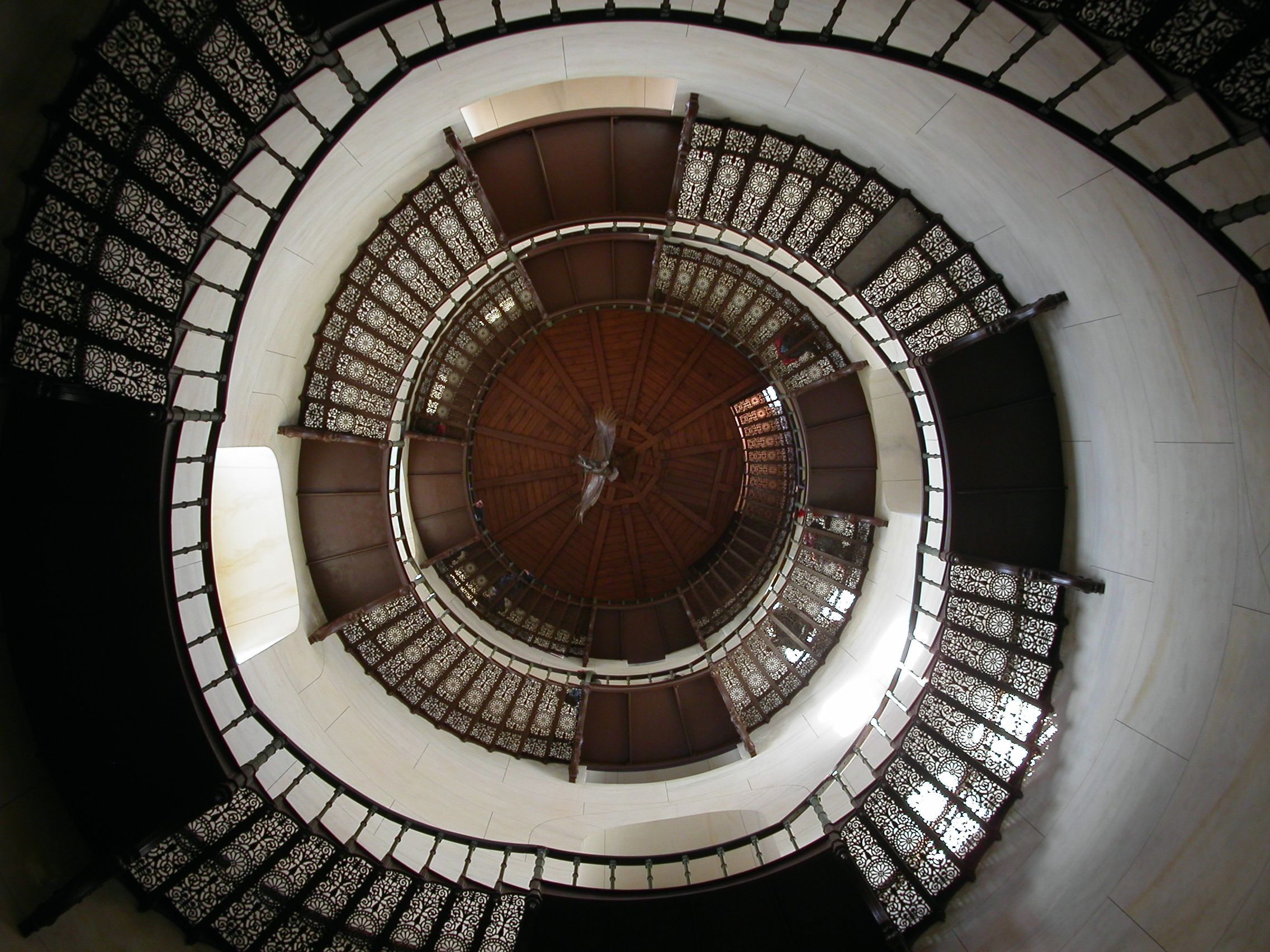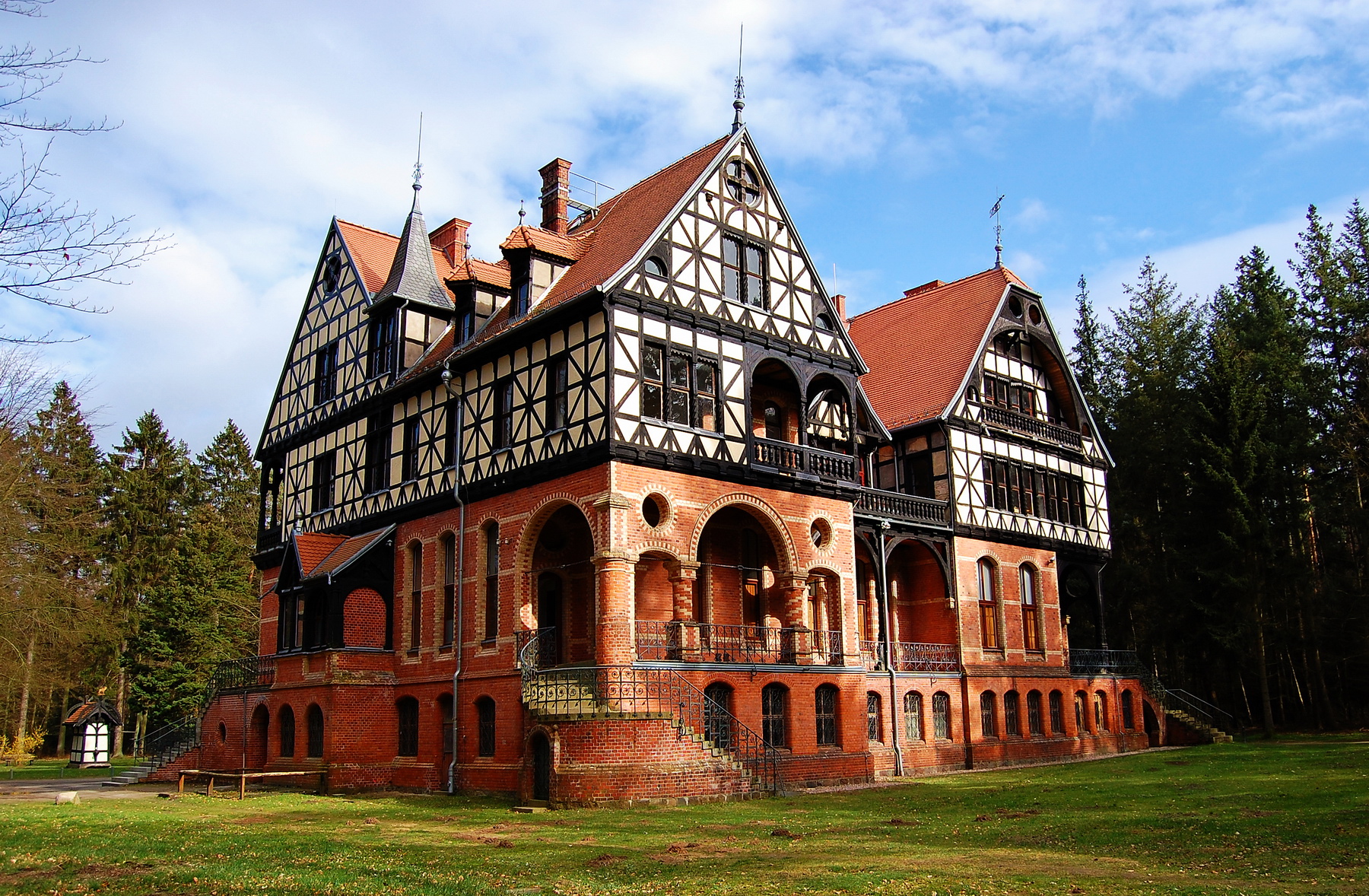|
Jagdschloss
A ''Jagdschloss'' is a hunting lodge in German-speaking countries. It is a ''schloss'' set in a wildlife park or a hunting area (such as a forest, field or by a lake) that served primarily as accommodation for a ruler or aristocrat and his entourage while hunting in the area. Characteristics A ''Jagdschloss'' was often the venue for a banquet accompanying a hunt, and sometimes it also hosted festivals and other events. The term ''Jagdschloss'' is often equated to the '' Lustschloss'' or ''maison de plaisance'', particularly as the hunt was also a recreational activity. However, a ''Lustschloss'' and ''Jagdschloss'' differ in function as well as architecture. The layout and furnishing of a ''Lustschloss'' is unconstrained, while that of a ''Jagdschloss'' is always related to hunting: the walls may be adorned with antlers and other trophies, with scenes of hunting, and also by a deliberate use of wood or other natural materials. A ''Jagdschloss'' could also be very lavishly fur ... [...More Info...] [...Related Items...] OR: [Wikipedia] [Google] [Baidu] |
Jagdschloss Grunewald
The Jagdschloss Grunewald, a hunting lodge, is the oldest preserved castle of Berlin, Germany. It is on the south waterfront of the Grunewaldsee and is part of the locality Dahlem (Berlin), Dahlem in the borough Steglitz-Zehlendorf. The Jagdschloss was built in 1542/1543. Its owner was Joachim II Hector, Elector of Brandenburg, Joachim II Hector the prince-elector of the Margraviate of Brandenburg. The building was created in the Renaissance style and got the name ''Zum grünen Wald'', "to the green forest", and gave the whole Grunewald (forest), Grunewald its name. Around 1800 the château got the name Grunewald too. During reconstructions between 1705 and 1708 by Frederick I of Prussia, Frederick I, the first king of Kingdom of Prussia, Prussia, it received its Baroque design from master builder Martin Grünberg. The Jagdschloss has been administered by the Prussian Palaces and Gardens Foundation Berlin-Brandenburg since 1932 and is used as a museum. It contains paintings by ... [...More Info...] [...Related Items...] OR: [Wikipedia] [Google] [Baidu] |
Göhrde Hunting Lodge
The Göhrde hunting lodge () is a former hunting lodge in Göhrde, Lower Saxony in Germany. The Göhrde State Forest was once a favourite hunting ground of the dukes of Brunswick-Lüneburg. Later the kings of Hannover also hunted here and – to 1918 – the German emperors as well. As Elector of Hanover, king George I of Great Britain (1660–1727) built a baroque style palace here between 1706 and 1709 by the architects Louis Remy de la Fosse and Johann Christian Böhm. The palace was timber framed and in bad repair by the early 19th century. In 1827, it was taken down. The German Emperors redeveloped the former stables in a new hunting lodge. After the First World War, the hunting lodge served as a seminary and school. Today, it is privately owned and in poor condition. Almost nothing remains of the 18th-century splendour. History Royal hunting lodge for King George I The Göhrde forests are located near the Elbe river between Lüneburg and Dannenberg. The forests we ... [...More Info...] [...Related Items...] OR: [Wikipedia] [Google] [Baidu] |
Jagdschloss Glienicke Potsdam
A ''Jagdschloss'' is a hunting lodge in German-speaking countries. It is a ''schloss'' set in a wildlife park or a hunting area (such as a forest, field or by a lake) that served primarily as accommodation for a ruler or aristocrat and his entourage while hunting in the area. Characteristics A ''Jagdschloss'' was often the venue for a banquet accompanying a hunt, and sometimes it also hosted festivals and other events. The term ''Jagdschloss'' is often equated to the ''Lustschloss'' or ''maison de plaisance'', particularly as the hunt was also a recreational activity. However, a ''Lustschloss'' and ''Jagdschloss'' differ in function as well as architecture. The layout and furnishing of a ''Lustschloss'' is unconstrained, while that of a ''Jagdschloss'' is always related to hunting: the walls may be adorned with antlers and other trophies, with scenes of hunting, and also by a deliberate use of wood or other natural materials. A ''Jagdschloss'' could also be very lavishly furni ... [...More Info...] [...Related Items...] OR: [Wikipedia] [Google] [Baidu] |
Jagdschloss Wolfstein
A ''Jagdschloss'' is a hunting lodge in German language, German-speaking countries. It is a ''schloss'' set in a wildlife park or a hunting area (such as a forest, field or by a lake) that served primarily as accommodation for a ruler or aristocrat and his entourage while hunting in the area. Characteristics A ''Jagdschloss'' was often the venue for a banquet accompanying a hunt, and sometimes it also hosted festivals and other events. The term ''Jagdschloss'' is often equated to the ''Lustschloss'' or ''maison de plaisance'', particularly as the hunt was also a recreational activity. However, a ''Lustschloss'' and ''Jagdschloss'' differ in function as well as architecture. The layout and furnishing of a ''Lustschloss'' is unconstrained, while that of a ''Jagdschloss'' is always related to hunting: the walls may be adorned with antlers and other trophies, with scenes of hunting, and also by a deliberate use of wood or other natural materials. A ''Jagdschloss'' could also be ve ... [...More Info...] [...Related Items...] OR: [Wikipedia] [Google] [Baidu] |
Granitz Hunting Lodge
Granitz Hunting Lodge () is located on the German island of Rügen in the vicinity of the seaside resort of Binz. With over 200,000 visitors per year it is the most popular castle or ''schloss'' in Mecklenburg-Vorpommern.Ostsee-Zeitung, 12 April 2008, p. 6 Location The lodge lies in the middle of the forested Granitz ridge, which covers an area of about and has been part of the Southeast Rügen Biosphere Reserve since 1991. The name ''Tempelberg'' given to the highest hill in the Granitz comes from the 18th century, when a small hexagonal belvedere (structure), belvedere stood on the site of the present ''schloss''. The quickest way to get there is from the Baltic seaside resort of Binz on the Rügen Light Railway or the Hunting Lodge Express (''Jagdschlossexpress''). History The Jagdschloss, hunting lodge (''Jagdschloss'') was built on the highest hill in East Rügen, the high Tempelberg, in the years 1838 to 1846 by order of Prince Wilhelm Malte I of House of Putbus, Pu ... [...More Info...] [...Related Items...] OR: [Wikipedia] [Google] [Baidu] |
Jagdschloss Glienicke
Jagdschloss Glienicke is a hunting lodge in the Berlin district of Wannsee near Glienicke Bridge. Babelsberg and Glienicke Palace can be seen nearby. Originally constructed in the late 17th century and expanded in the mid-1800s, the castle is part of the Palaces and Parks of Potsdam and Berlin UNESCO World Heritage Site, owing to its cohesion with the surrounding landscape and its testimony to the power of Prussia in the 17-19th centuries. History The construction of a small lodge was begun in 1682-84 under the "Great Elector" Frederick William of Brandenburg, together with a cavalier house and stables, possibly according to plans designed by Charles Philippe Dieussart. The castle grounds were completed in 1693 during the reign of his successor Frederick III. When Elector Frederick rose to a ''King in Prussia'' in 1701, he had the castle lavishly rebuilt in a Baroque style. King Frederick William I of Prussia used it as a military hospital. In 1763, King Frederick the Great ... [...More Info...] [...Related Items...] OR: [Wikipedia] [Google] [Baidu] |
Gelbensande Jagdschloss
Gelbensande is a municipality in the German state of Mecklenburg-Vorpommern. It is located in the Rostock district, near Rostock, Ribnitz-Damgarten and Stralsund. Four other villages are part of Gelbensande. Gelbensande is about from the Baltic Sea coast. It can be reached by car on B 105, as well as by train ( Stralsund–Rostock railway). Hunting lodge ''Jagdschloss Gelbensande'' is a hunting lodge or manor that was erected between 1880 and 1885 as a summer residence for Grand Duke Friedrich Franz III of Mecklenburg-Schwerin. After 1887, it was used as a base for hunting in the surrounding forest, the Rostock Heath. Because of the Grand Duke's marriage to one of the Russian Tsar's granddaughters, the Mecklenburg-Russian relationships can still be seen inside the castle today. The ''Jagdschloss'' remained in the Grand Duke's use until 1944. It was subsequently used as an army hospital, a sanatorium for tuberculosis, a public library, a veteran's club and a sort of hostel ... [...More Info...] [...Related Items...] OR: [Wikipedia] [Google] [Baidu] |
Lustschloss
In Renaissance and Early Modern German architecture, a ''Lustschloss'' (, both meaning "pleasure palace") is a country house, château, or palace which served the private pleasure of its owner, and was seasonally inhabited as a respite from court ceremonies and state duties. In France, the Château de Madrid in the Bois de Boulogne, easily reached from Paris, arguably set an example, and Louis XIV similarly holidayed annually from the Palace of Versailles to his nearby Château de Marly, and more frequently used his Grand Trianon, to which the Petit Trianon was added in the following century. There is no common term for such houses in English, and the phenomenon developed especially in the smaller states of Germany, where the ruler was firmly based in one or two main palaces, as opposed to the much larger number available to the monarchies of England, France, and Spain (after Henry VIII's prolific building, Elizabeth I of England had some 40 palaces, most now demolished). ... [...More Info...] [...Related Items...] OR: [Wikipedia] [Google] [Baidu] |
Maison De Plaisance
In Renaissance architecture, Renaissance and Early Modern German architecture, a ''Lustschloss'' (, both meaning "pleasure palace") is a country house, château, or palace which served the private pleasure of its owner, and was seasonally inhabited as a respite from court ceremonies and state duties. In France, the Château de Madrid in the Bois de Boulogne, easily reached from Paris, arguably set an example, and Louis XIV similarly holidayed annually from the Palace of Versailles to his nearby Château de Marly, and more frequently used his Grand Trianon, to which the Petit Trianon was added in the following century. There is no common term for such houses in English, and the phenomenon developed especially in the smaller states of Germany, where the ruler was firmly based in one or two main palaces, as opposed to the much larger number available to the monarchies of England, France, and Spain (after Henry VIII's prolific building, Elizabeth I of England had some 40 palaces, ... [...More Info...] [...Related Items...] OR: [Wikipedia] [Google] [Baidu] |
Augustusburg Hunting Lodge
The hunting lodge of Augustusburg () was built from 1568 to 1572 above the town of the same name on a hill called the ''Schellenberg'' () on the northern edge of the Ore Mountains of Germany. The castle, which is visible from afar, is a local landmark. It lies about east of the city of Chemnitz and about southwest of Freiberg in the Free State of Saxony. In building a new castle, Prince Elector Augustus wanted not just to create a prestigious palace for his hunting trips, but also to underline his leading position in Central Germany. The immediate occasion for its construction was his victory in the Grumbach Brawl (). By enforcing the imperial ban on his Ernestine rivals – John Frederick the Middle and outlawed knight, Wilhelm von Grumbach, who sought refuge with John Frederick – the Albertine elector, Augustus, was able secure his supremacy over the Ernestines. He was also given the of Weida, Ziegenrück and Arnshaugk, which belonged to what later became the ( Neus ... [...More Info...] [...Related Items...] OR: [Wikipedia] [Google] [Baidu] |
Baldone Manor
Baldone Manor, also called White Castle (), is a manor house in Baldone, Ķekava Municipality in the Semigallia region of Latvia. It was built in 1901 as a hunting lodge (). At present Baldone Music School is operating in the former hunting lodge. History The castle was built near Baldone Forest by Adam V. Mickiewicz (1865-1920), who later became the head of the Baltic Agricultural and State Property Administration. He was married to Elisabeth Buckhaven. Manor house was always painted white, and therefore has its name — White Castle (). During the First World War, the castle housed a Russian army hospital until October 1915, and later a German army hospital. After the First World War, the White Castle became one of Baldone's spas, which belonged to the Mickiewicz family, but they did not occupy the entire manor house, and it was also used as children's shelter. Nicholas Mickiewicz who inherited the property, had a son in 1929 Denis Mickiewicz, who emigrated with much of hi ... [...More Info...] [...Related Items...] OR: [Wikipedia] [Google] [Baidu] |






